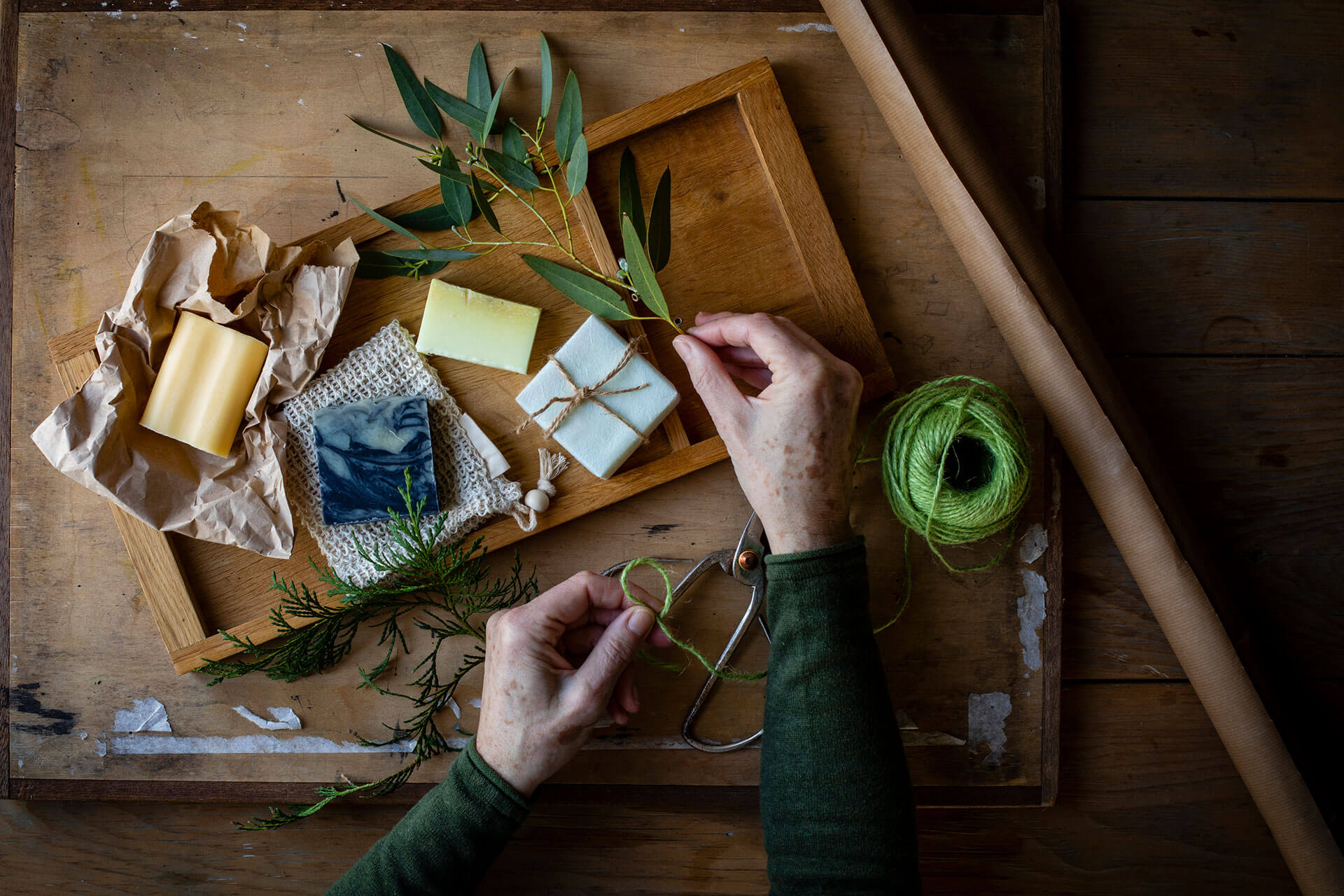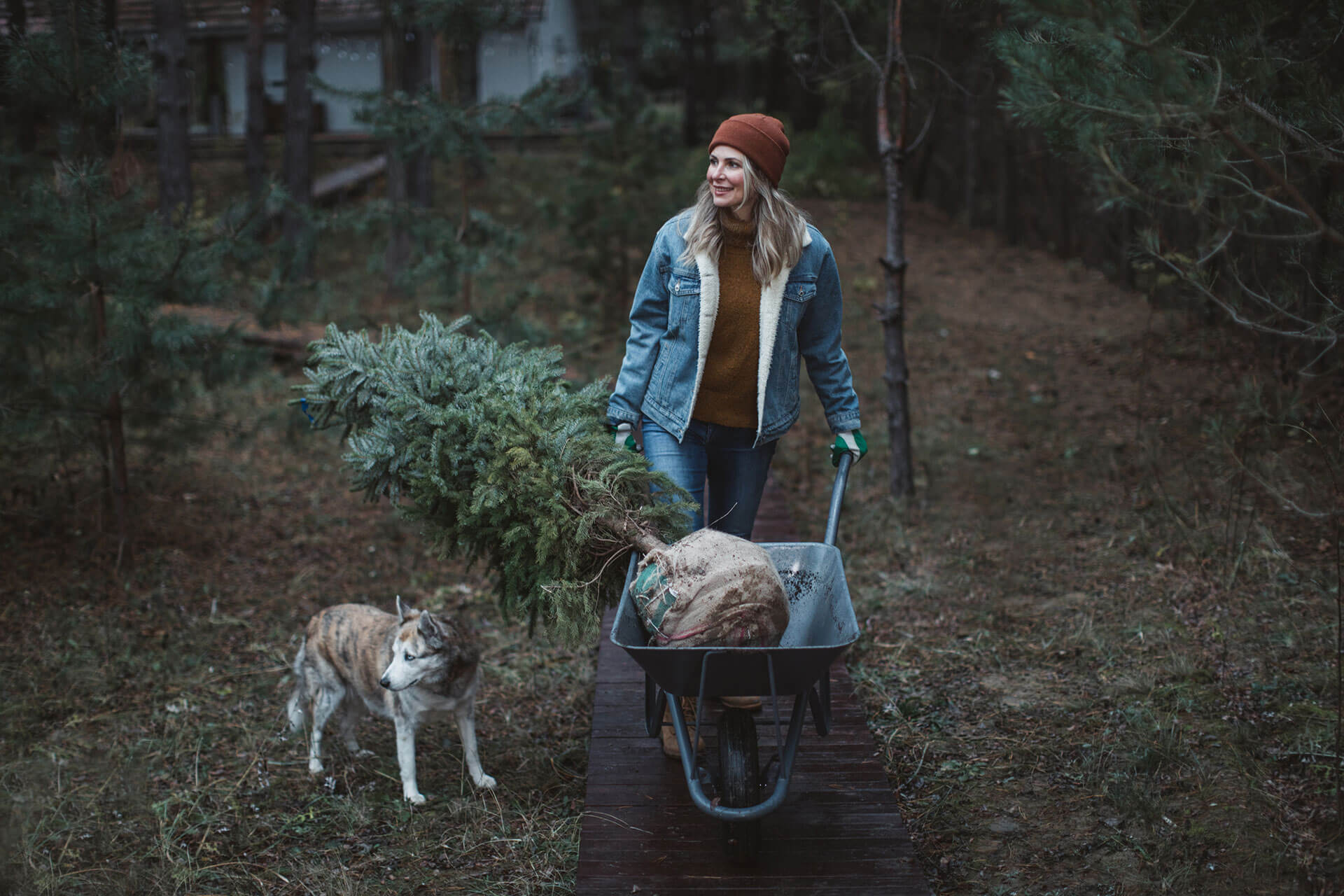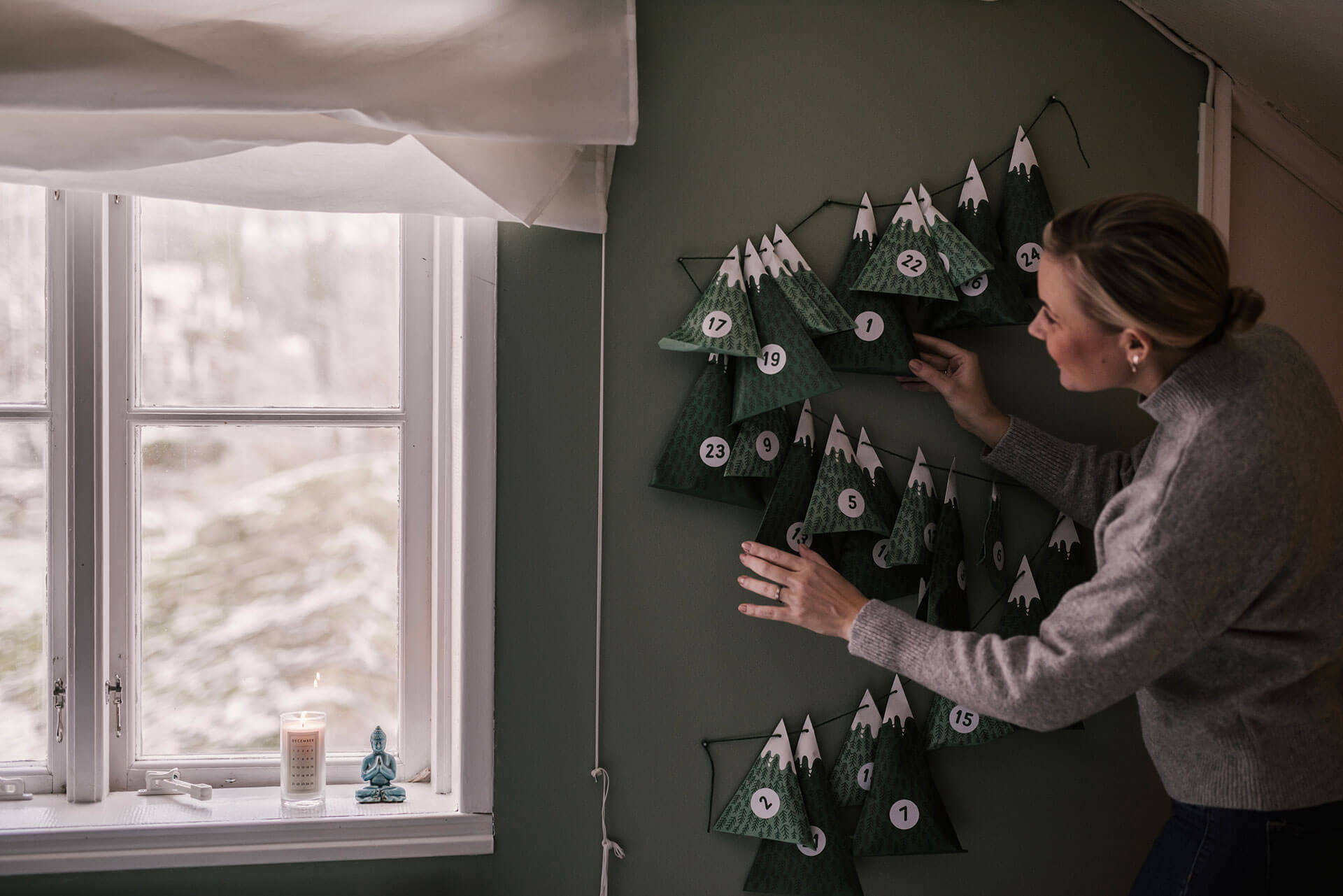If we all make just one or two small changes to reduce our environmental footprint this Christmas, it could be hugely beneficial to the planet.
We’re less likely to panic buy things that we don’t really need if we plan ahead – so just by being more Christmas organised you’re most likely reducing your negative impact.
With Earth Day coming up on 22 April, I’ve challenged myself to question everything I buy in order to make 2022 my most eco-friendly Christmas yet. Will you join me?
Here are my top tips for a more sustainable Christmas:
Use planet-friendly Christmas wrapping
In the UK we use a shocking 227,000 miles of wrapping paper each year – enough to go around the world almost 10 times.
Lots of us have leftover rolls of old wrapping paper squirrelled away, so it’s a good idea to use this up before buying more.
When you need more wrapping supplies, look for rolls made of recycled materials or try brightly coloured fabric squares (or pieces cut from old clothes) that can be reused year after year.
You can also make reusable drawstring gift bags/pouches from old material.
Plus, if you unwrap gifts you receive very carefully, you can save the paper and use it to wrap your own presents.
One thing to watch out for when disposing of used wrapping paper is if it contains non-recyclable materials such as foil, plastic and glitter.
Sometimes it’s hard to tell, but the ‘scrunch test’ can be a good indicator.
Simply screw up the paper and let it go! If the paper stays scrunched then it can most likely be recycled – but if it unfolds, it probably contains non-recyclable materials.
If you want to be 100% sure, choose plain brown paper and decorate it yourself with a sprig of holly – and secure it with string or biodegradable sticky tape (most tapes can’t be recycled).

Give green gifts
Reusable coffee cups and water bottles, beeswax food wraps and reusable shopping bags all make great gifts: and they’ll help your friends and family live more sustainably.
If you want to be extra sure that what you’re buying is eco-friendly, it’s worth looking out for environmental labels like Fairtrade, Rainforest Alliance and the Forest Stewardship Council.
Or you can hit the charity shops and buy pre-loved gifts – and save yourself some money at the same time!
Send ‘plantable’ Christmas cards
I only discovered plantable cards quite recently and I think they’re a brilliant idea.
The paper used to make the cards is embedded with wildflower or vegetable seeds, so when your recipient has finished with the card they can plant it and enjoy whatever grows for a long time to come.
Another option is to make your own cards, perhaps using pressed flowers or leaves – or you can upcycle the Christmas cards you received last year, cutting out the pictures and patterns and creating colourful collages on recycled card.
If you’re buying your Christmas cards, look out for the Forest Stewardship Council (FSC) logo as this shows the paper has been made sustainably – or check out the Woodland Trust shop and help them raise funds and care for Britain’s woodlands at the same time.
Don’t use plastic glitter
Glitter might look pretty, but its effect on the environment most definitely isn’t: it’s basically a microplastic and we should all avoid using it.
But if your Christmas isn’t Christmas without it, make sure any glitter you buy is plant-based and biodegradable.
Buy environmentally-friendly crackers
I love crackers, but they are often so wasteful with cardboard, ribbon, paper, and bits of plastic immediately ending up in the recycling or rubbish bin.
Luckily there is a more planet-friendly option: reusable Christmas crackers that allow you to add your own personalised, plastic-free gifts.
Make your own Christmas decorations
Tinsel is made of non-recyclable plastic, so instead of buying new, consider making your own decorations such as bunting or paper chains.
An alternative to a plastic wreath for your front door is a homemade one with green foliage, winter berries, pine cones and nuts – or you could create an alternative wreath from fabric that will last for many years to come.

Reuse a Christmas tree
If you already own a plastic Christmas tree, the best thing to do for the environment is look after it, use it for as many years as possible and then dispose of it carefully.
If not, you can rent a real Christmas tree from a garden centre – and return it in January so it can be reused next year.
For more information about whether a real or fake Christmas tree is best, check out my blog post on the great Christmas tree debate.
Switch to LED Christmas lights
LEDs use up to 80% less energy compared to traditional incandescent lights, so are far better for the environment – and your energy bills.
You can also switch to solar-powered outdoor lights, and put all your Christmas lights on a timer, so they only come on when needed.

Eat less meat
Meat production is a big contributor to greenhouse gas emissions, so if you’re trying to reduce your negative impact on the environment, making a small change to your festive eating habits is a good place to start.
You don’t have to go cold turkey (groan!) and cut meat out completely: if you and your family opt for a smaller, organic turkey this year you will have made a difference.
There are also excellent meat substitutes available, with many vegan (no) pigs in blankets and stuffing balls hardly distinguishable from the ‘real’ thing. So eating turkey but going veggie on the trimmings could be a good compromise.
Use up leftovers
I often buy too much food at Christmas because I’m so worried about running out – so one thing I’ll definitely make an extra effort to cut down this year.
Most of us will still have leftovers though – so it’s about finding clever ways to use them up to avoid throwing food in the bin.
As always, planning ahead can help. For example, you can eat as much food from your freezer as you can in the run-up to Christmas to make way for your leftovers.
It’s also handy to have recipes to hand that use up all the usual Christmas leftovers – you don’t have to have parsnip soup and turkey curry until the new year!
There are loads of brilliant recipes online, so I suggest doing some research now to save you time and effort in December.
You can also help reduce food miles by buying your Christmas dinner from small food producers local to you – and they’ll often use less packaging, too.
I hope these tips inspire you to have a more eco-friendly Christmas this year – let me know how you get on, and also share your own ideas!